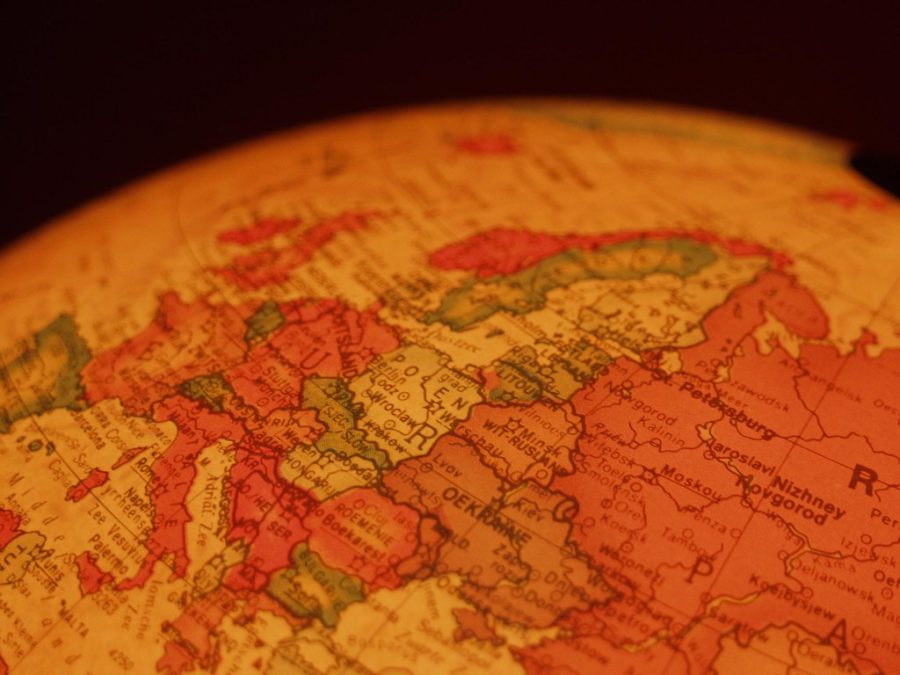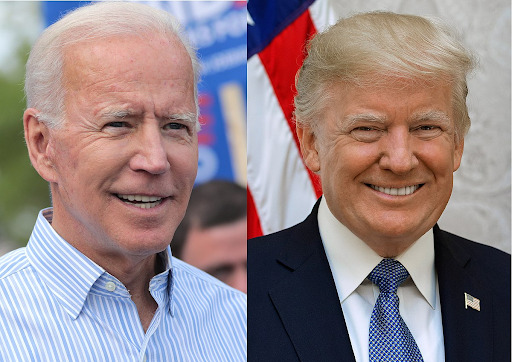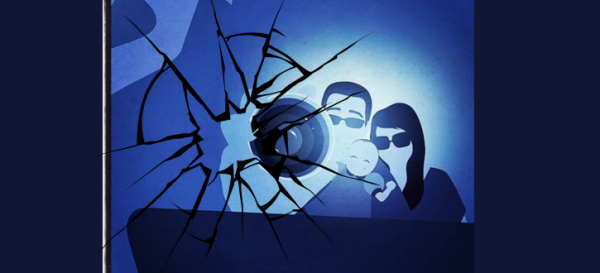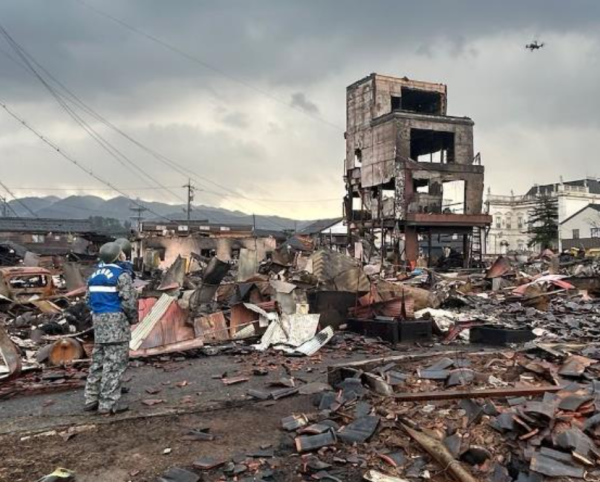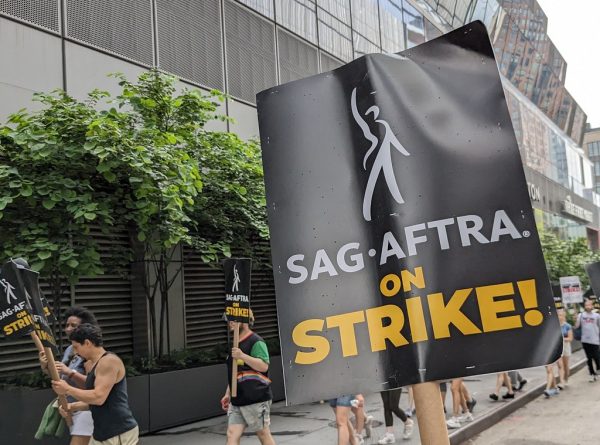The Historical Background Behind the Russia and Ukraine Conflict
Neighbors and adversaries: The history of the conflict between Russia and Ukraine goes back much further than most modern news coverage suggests. “Globalicious!” by rogiro is marked with CC BY-NC 2.0. To view the terms, visit https://creativecommons.org/licenses/by-nc/2.0/?ref=openverse
March 7, 2022
On February 24th, Russia invaded Ukraine, shocking Ukrainians and countries around the world. The events that followed included a long list of unprecedented acts and an even longer list of exceptional economic sanctions. Although the invasion came as a surprise to many, the tensions between Russia and Ukraine festered over a long period of time.
In order to really understand the nature of this conflict, it is important to understand the history that brought us to this point.
Ukraine as a part of the Soviet Union
Russia and Ukraine share a long, tumultuous history, but to understand the current conflict, we should start with when the Soviet Union absorbed Ukraine in 1922. During this time, Stalin (the leader of the Soviet Union) and his communist government were weeding out dissenters and anyone who was culturally different through a process called Russification. Through Russification, Stalin forced non-Russian communities to assimilate into Russian culture, and this included Ukrainians.
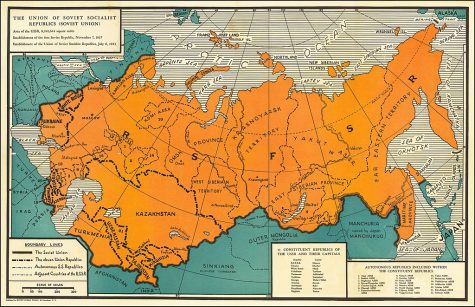
“His [Stalin’s] goal was to unify the disparate elements of the USSR into one political and economic whole,” said IB 20th Century History teacher Mr. Denney.
One particular Stalinist social policy resulted in grave consequences for Ukrainians: the collectivization of Russian agriculture and farming. Stalin hoped to increase food exports in order to grow the Russian economy, but this backfired. The Soviet government forced peasants to give up their personal property, farms, and houses to form collective farms. The collective farms were intended to encourage the eradication of classes; however, through them a new middle class sprang up among a group of Ukrainians known as the Kulaks. In response, Stalin persecuted Kulaks and any other groups of people who disagreed with collectivism. The failure of collectivization led to extreme food shortages throughout the country.
“To connect to Ukraine, Stalin deliberately targeted […] the Kulaks for purging in 1933-34. 6-7 million starved to death in the famine that resulted from his deliberate actions against them” Mr. Denney said.
This artificially created famine is known as the Holodomor. While the food shortages due to collectivization started the famine, it was really Stalin’s fear of Ukrainian rebellion and questionable policies that allowed the famine to grow into the Holodomor. Stalin banned villages and towns in Ukraine from receiving food and Ukrainians were not allowed to leave the country. The Soviet government largely covered up the true nature of Holodomor and the enormous death count.
Fall of the Soviet Union
In the early 1990s, anti-communist sentiment spread throughout Eastern Europe, especially Ukraine. After various protests, coups, and elections, the Ukrainian people finally declared their independence in August 1991. They didn’t make their independence official until December 1991, and this finally dissolved the Soviet Union. It was after Ukraine declared independence that the tension between Ukraine and Russia evolved and came into the global eye. Throughout the late 1990s and early 2000s, Ukraine experienced a tug-of-war between communist Russia and the capitalist West.
2004 Orange Revolution
Ukraine’s fourth political election after its separation from the Soviet Union led to massive conflict and political tension. It was filled with much corruption and turmoil, as the two candidates, Viktor Yushchenko and Viktor Yanukovych, battled it out.
Viktor Yanukovych, who was selected by the corrupt president at the time, was declared election winner by regime-controlled media. However, reliable exit polls indicated that the opposition candidate, Viktor Yushchenko, had won.
Additionally, Yushchenko had been poisoned and almost murdered while campaigning. People were upset when they heard about voter intimidation and destroyed ballots. Once the Ukrainian public found out that even elected officials were involved, they had enough.
Over a million people flooded onto Kyiv‘s streets in sub-zero conditions. Demonstrators constructed human barriers around government buildings, halting all governmental activities. Yushchenko’s supporters wore orange to demonstrate support in his favor when they participated in these rallies, giving the Orange revolution its name.
The impacts are still relevant today because this election essentially divided Ukrainians into who supported Russian values and customs versus who opposed them. This major controversy still affects the area today as well.
Maidan Revolution
In February 2014, a huge shift took place in Ukraine’s political structure; recognizing this shift is vital for understanding the depth of both perspectives partaking in today’s conflict.
The Maidan revolution, also well known as the “Revolution of Dignity,” consisted of mass protests against the then Ukrainian president, Viktor Yanukovych, who had wide support from Russia. What really initiated these protests for democracy in Ukraine was Yanukovych’s infamous (at least in Ukraine) decision to not sign a trade agreement with the European Union (EU) when given the chance because of the constant pressure he faced from Russia.
After this, over 25,000 Ukrainian civilians (around 100 were killed in the incident) participated in month-long protests at Maidan in Kyiv. This backlash, along with other tensions, forced Yanukovych to flee his own country.
This left Ukraine’s parliament, The Rada, to elect a new president and prime minister. The new heads of the Ukrainian government supported the trade agreement with the EU, as well as other significant changes which boosted the economy and strengthened their independence.
At this point, Russia was angered by the new decisions, which made them feel politically even more insecure as Ukraine showed its willingness to work with the EU. In response, Russia dramatically annexed Crimea, leading to economic consequences for the entire region.
2014 Annexation of Crimea
Another major event that dialed up conflict was Russia’s annexation of Crimea in 2014. Crimea is a part of Ukraine that has close historical ties to Russia mainly because it was originally a part of the Russian Federation from 1783 to 1954.
Then in 1954, the Crimean Peninsula was given to Ukraine by the Soviet leader, Nikita Khrushchev. The historical ties between Crimea and Russia led many Ukrainians living in Crimea to have more loyalties to Russia. Additionally, many Russians believe they should have Crimea, leading to Irredentist feelings. This historical precedent was the main reason that Russia illegally annexed Crimea in 2014.
Since then, 140,000 ethnic Ukrainians and Crimean Tatars have left the peninsula and around 250,000 Russians have moved in. Moscow has contributed over 10 million dollars in subsidies for the region as well. This further solidified the presence of Russia in Ukraine, a place most of the world agrees it shouldn’t be, further heightening the tension in the area. This has significantly contributed to the current situation in Ukraine as well.
Overall…
Below is a timeline of important events that occurred during the entire conflict. Much of the information came from The New York Times’ article “A timeline of the tensions between Russia and Ukraine.” Visit the link to read even more about the history between these two countries.
Here is a link to the timeline!
The turmoil between the two nations has, as SFHS’ Mr. Reonas explained, been a “series of events that’s been happening over time.” Diving deeper into their historical conflicts, it becomes evident that the ongoing tension has hindered both nations’ progress and led to unfortunately prolonged violence. From the fall of the Soviet Union to political upheaval in Ukraine, Russia and Ukraine’s relationship has been tumultuous for centuries. Proponents of peace and prosperity can only hope the two independent nations will find a way to work towards making amends in the future.


